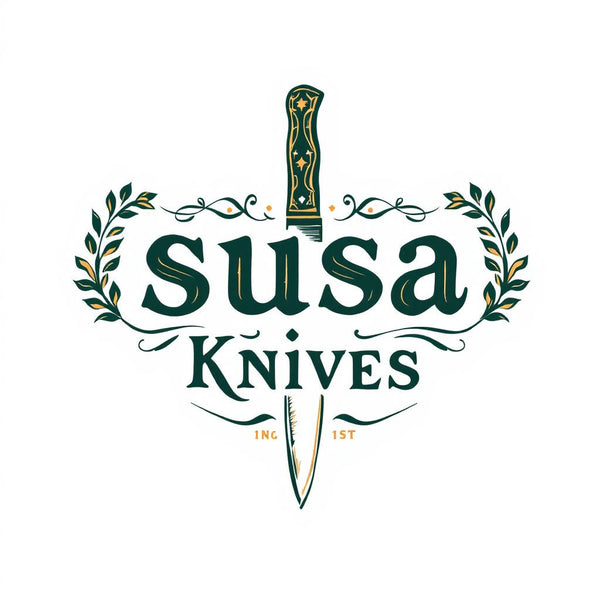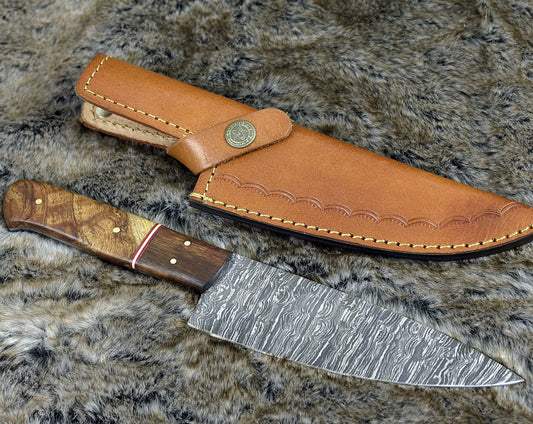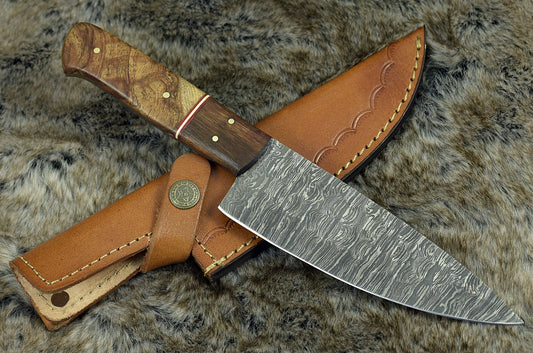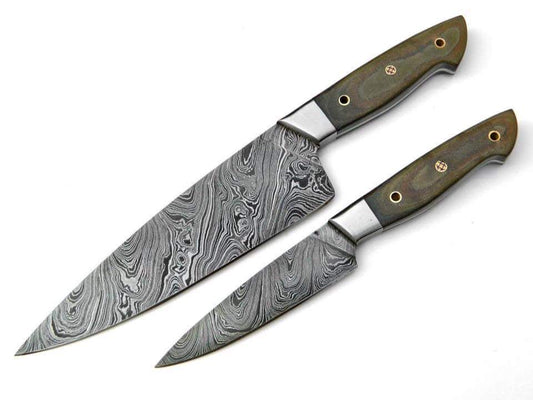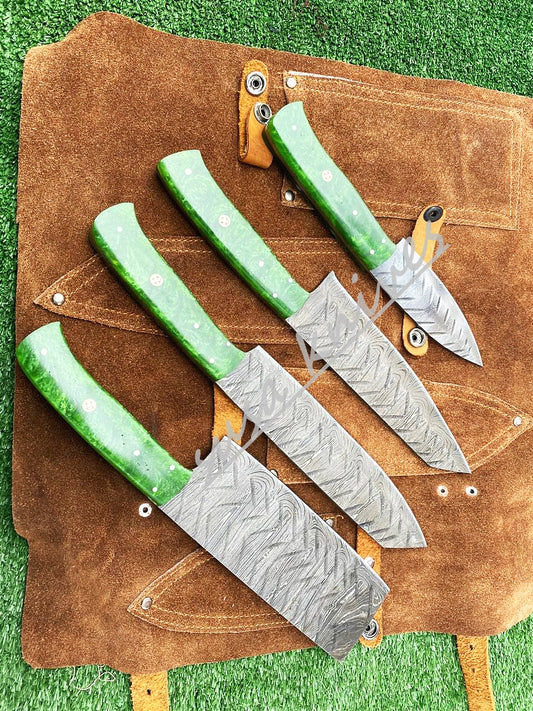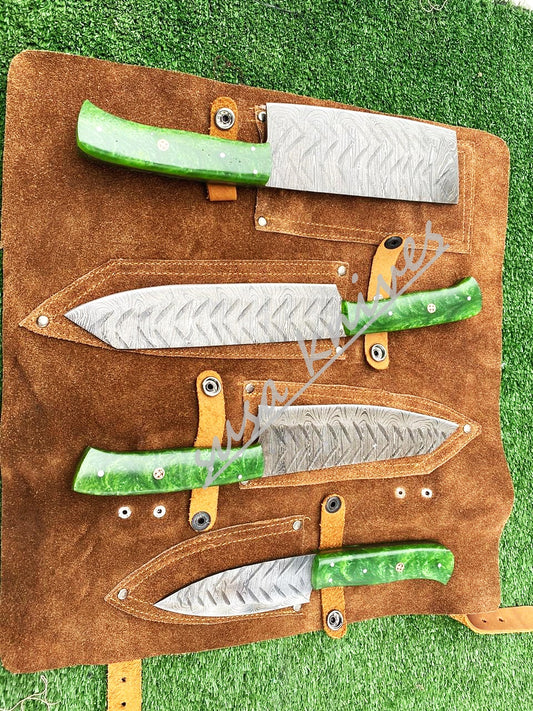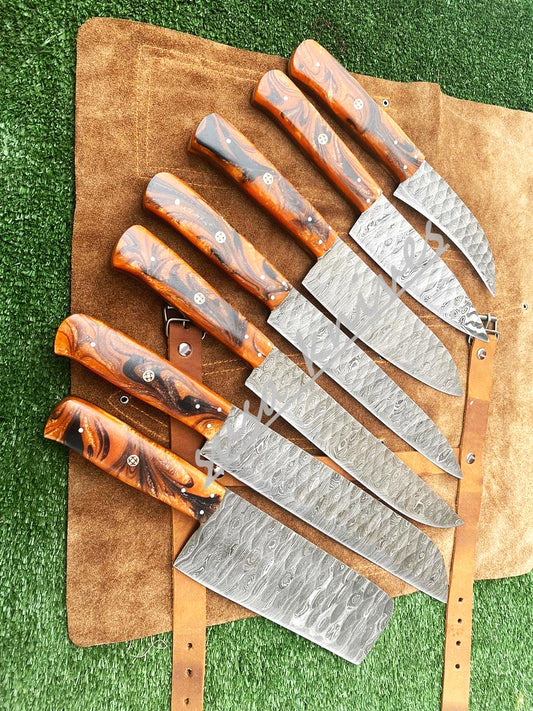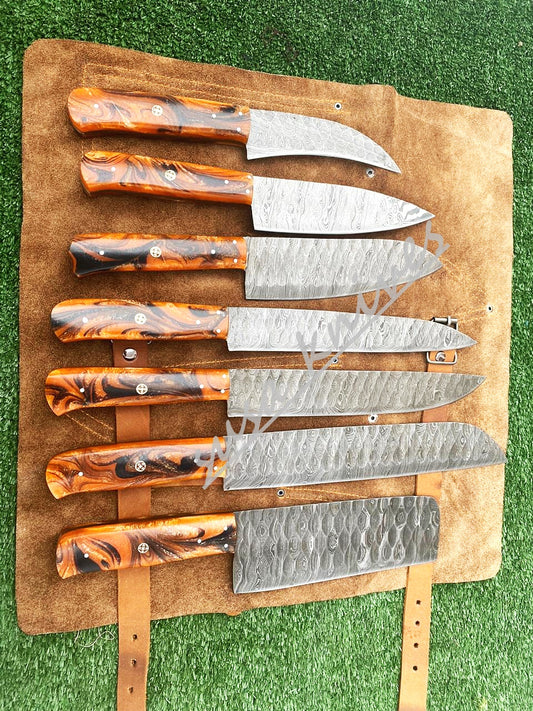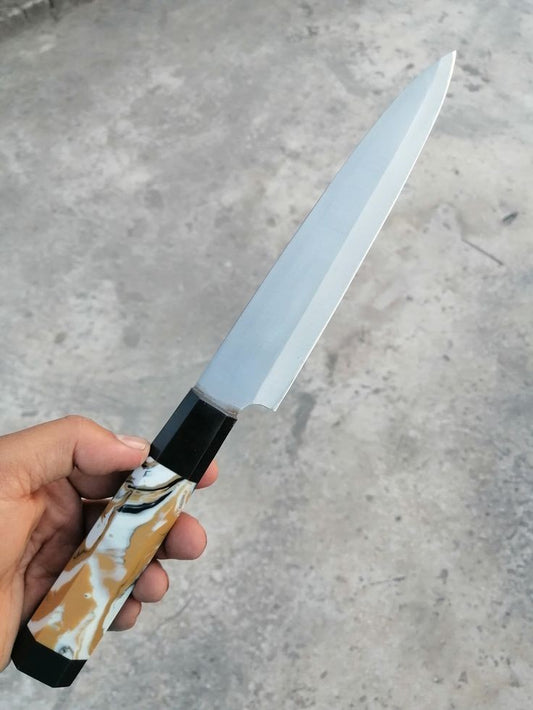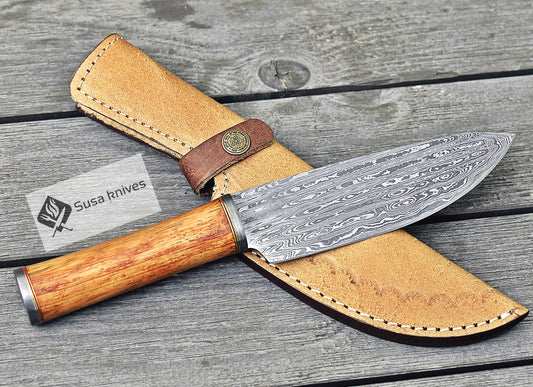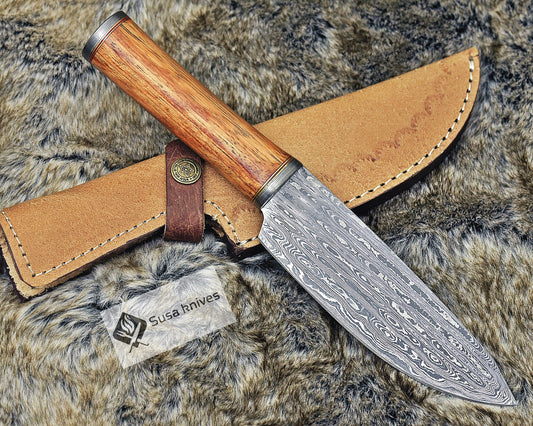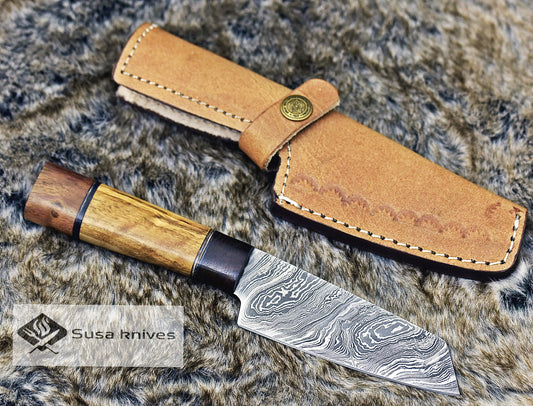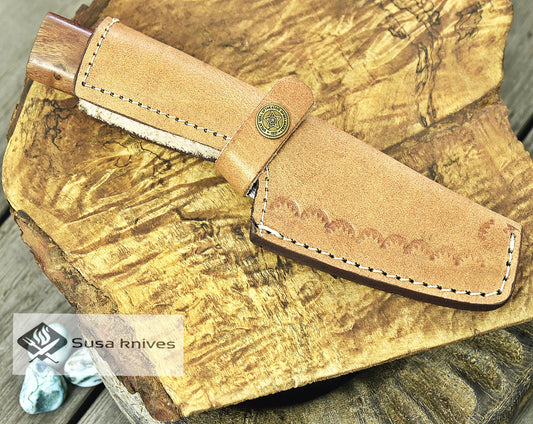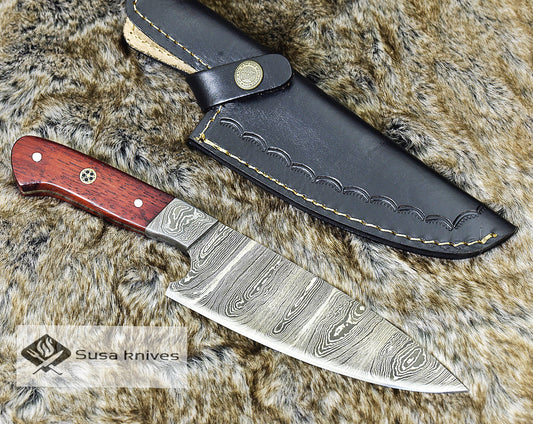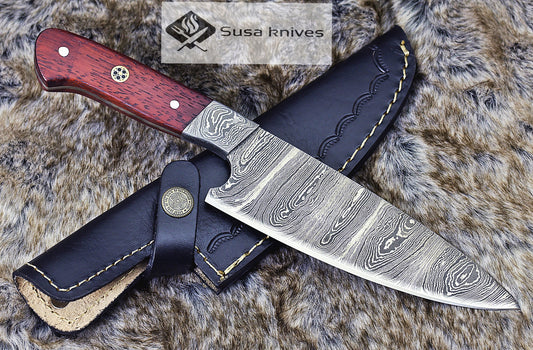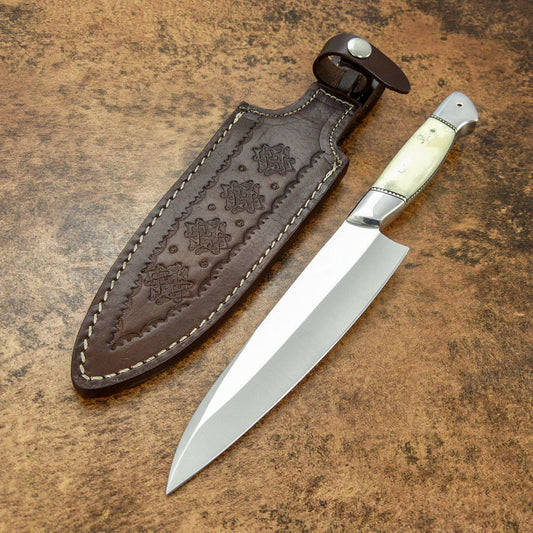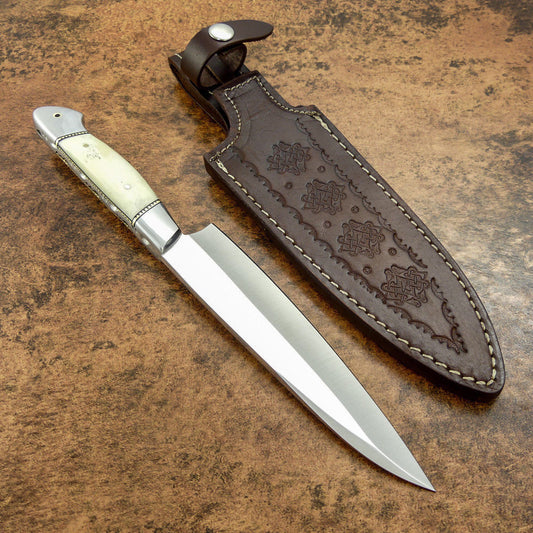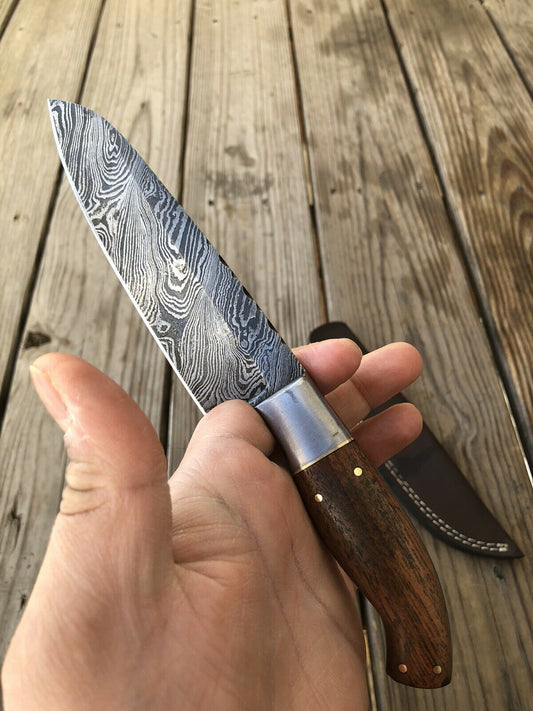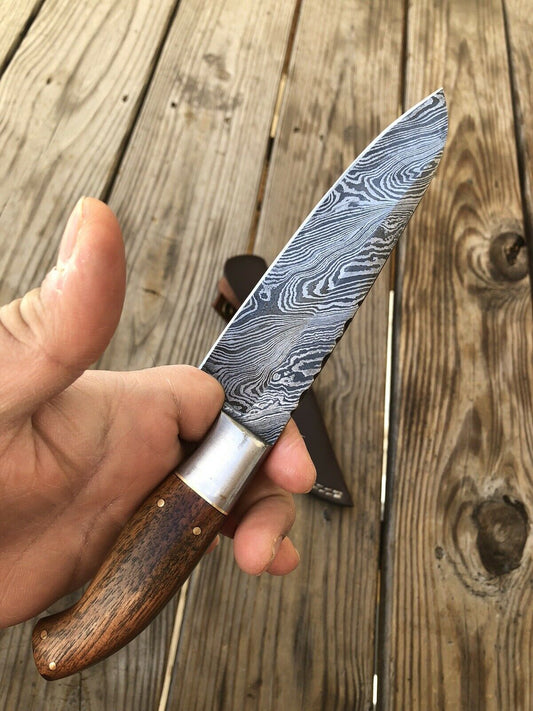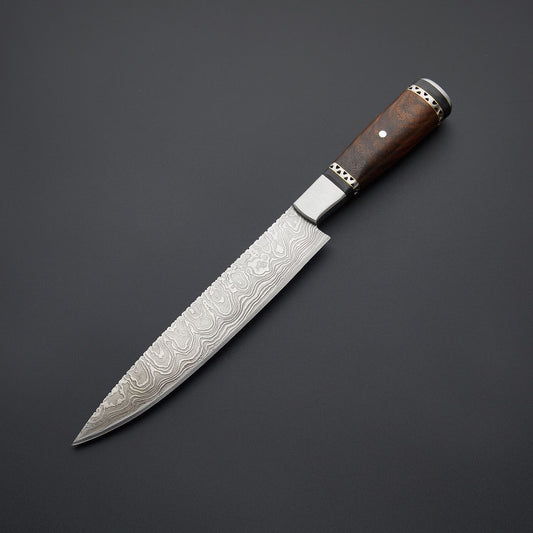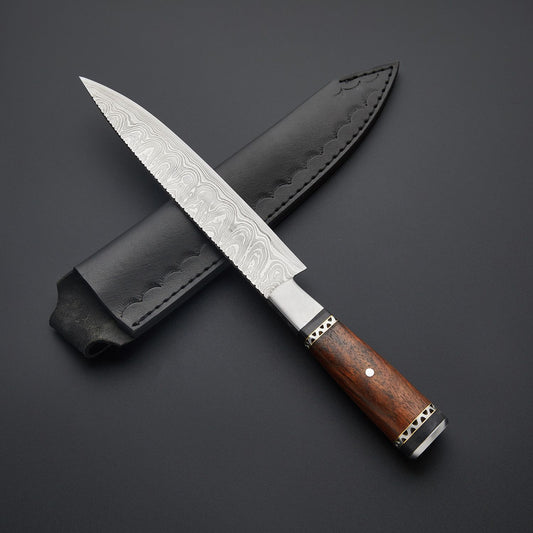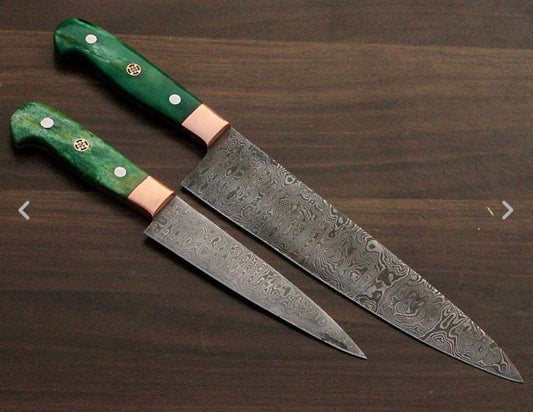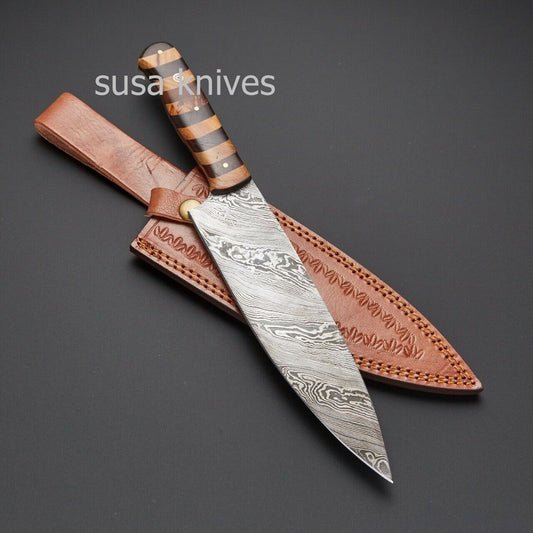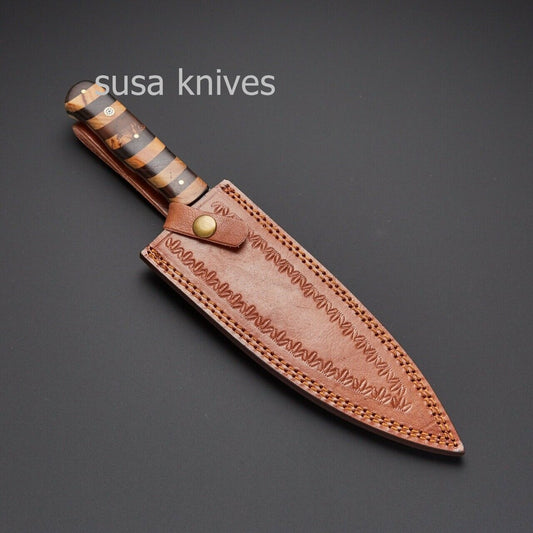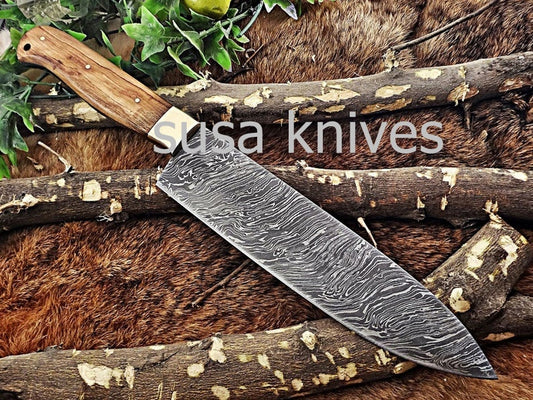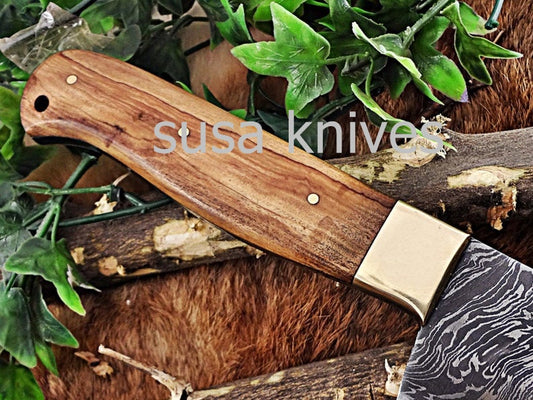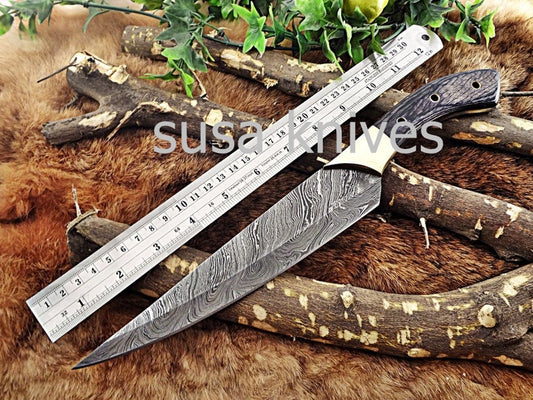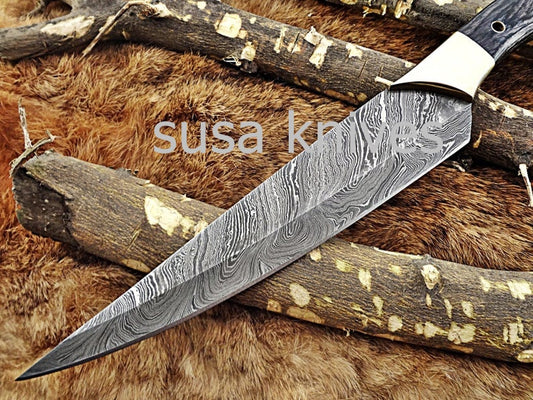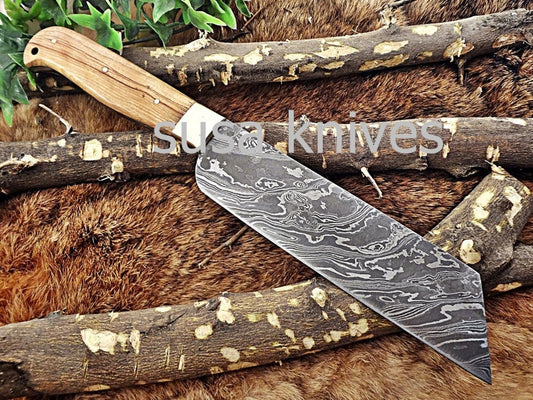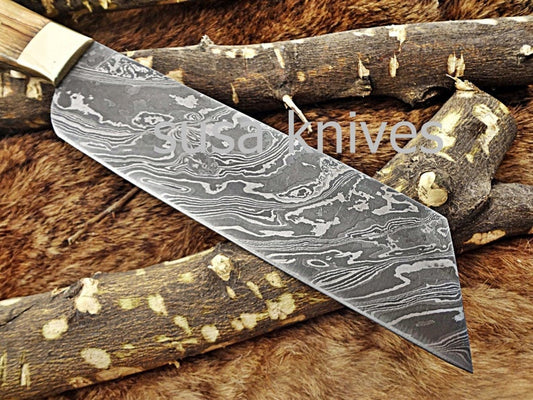Collection:
Chef knives
A chef's knife is composed of a blade and a handle, which are further broken down into several parts that work together to provide balance, control, and cutting power.
- Blade: The cutting body of the knife, typically 6 to 12 inches long, featuring a broad heel that tapers to a sharp point. The edge of a Western-style blade has a continuous curve, allowing for a rocking motion while cutting.
- Handle: The grip of the knife, designed for comfort and control. Handle materials range from traditional wood to durable, moisture-resistant synthetic composites.
- Tang: The part of the blade that extends into the handle. A "full tang" (where the metal runs the full length and width of the handle) provides the best strength and balance, while a "partial tang" is typically found on less expensive knives.
- Bolster: The thick metal band that joins the blade to the handle. It adds durability, weight for balance, and acts as a protective guard for your fingers.
- Heel: The widest and thickest part of the blade, located closest to the handle. This is the strongest part and is ideal for heavy-duty tasks like chopping hard vegetables.
-
Spine: The dull, top edge of the blade, opposite the cutting edge. It adds strength and can be used for crushing ingredients like garlic
Care and maintenanceTo ensure your chef's knife lasts for years, proper care is essential.
Wash by hand: Never put a good knife in the dishwasher. The high heat and harsh detergents can damage the blade and handle. Wash it with warm, soapy water and dry it immediately.- Regular honing: Use a honing steel every few uses to realign the blade's edge and maintain its sharpness. Honing does not sharpen the knife but keeps the edge straight.
- Sharpening: A dull knife is a dangerous knife. When honing no longer improves performance, sharpen the blade on a whetstone or have it professionally sharpened.
- Proper storage: Store your knife in a block, on a magnetic strip, or with a blade guard to protect the edge from being damaged by other utensils.
-
DAMASCUS STEEL PRO CHEF KNIFE, 10.5", DAMASCUS STEEL FRENCH BLADE, EXOTIC MANGO BURL WOOD HANDLE, MOSAIC PIN, CUSTOM FULL TANG FIXED BLADE CHEF'S KNIFE
Vendor:SUSA KNIVESRegular price $90.00 USDRegular price -
SUSA KNIVES DAMASCUS STEEL PRO CHEF KNIFE, 10.5", DAMASCUS STEEL FRENCH BLADE, EXOTIC MANGO BURL WOOD HANDLE, MOSAIC PIN, CUSTOM FULL TANG FIXED BLADE CHEF'S KNIFE
Vendor:SUSA KNIVESRegular price $120.00 USDRegular price$90.00 USDSale price $120.00 USD -
Custom Handmade Damascus Steel Fixed Blade Kitchen Chef Knife Set
Vendor:SUSA KNIVESRegular price $160.00 USDRegular price$180.00 USDSale price $160.00 USDSale -
Set Of 7 Beautiful Handmade Damascus Steel Chef Knives With Leather Bag
Vendor:SUSA KNIVESRegular price $340.00 USDRegular price$240.00 USDSale price $340.00 USD -
12" Handmade D2 Steel Chef Knife Resin Handle, Cooking Knife
Vendor:SUSA KNIVESRegular price $110.00 USDRegular price -
DAMASCUS STEEL PRO CHEF KNIFE, 10.5", DAMASCUS STEEL BLADE, EXOTIC RED MERANTI WOOD HANDLE, CUSTOM FULL TANG FIXED BLADE CHEF'S KNIFE
Vendor:SUSA KNIVESRegular price $90.00 USDRegular price -
CUSTOM DAMASCUS KNIFE, CHEF KNIFE, 8.5" inch UTILITY PAIRING, DAMASCUS STEEL STRAIGHT BACK BLADE, EBONY OLIVE & WALNUT WOOD COMPOSITE HANDLE, FIXED BLADE, FULL TANG
Vendor:SUSA KNIVESRegular price $90.00 USDRegular price -
DAMASCUS STEEL PRO CHEF UTILITY PAIRING KNIFE, 10.5", DAMASCUS STEEL DROP POINT BLADE, EXOTIC PADAUK WOOD HANDLE, FIXED BLADE, FULL TANG
Vendor:SUSA KNIVESRegular price $95.00 USDRegular price -
CUSTOM HANDMADE CHEF KITCHEN KNIFE D2 STEEL BEAUTIFUL CAMEL BONE -LEATHER SHEATH
Vendor:SUSA KNIVESRegular price $90.00 USDRegular price -
Hand Forged DAMASCUS STEEL Chef Knife W/Rose Wood & Steel Bolster Handle
Vendor:SUSA KNIVESRegular price $90.00 USDRegular price -
MADE BLACK FORGE DAMASCUS KITCHEN // CHEF KNIFE
Vendor:SUSA KNIVESRegular price $80.00 USDRegular price -
DAMASCUS STEEL PRO CHEF KNIFE, 10.5", DAMASCUS STEEL FRENCH BLADE, EXOTIC MANGO BURL WOOD HANDLE, MOSAIC PIN, CUSTOM FULL TANG FIXED BLADE CHEF'S KNIFE
Vendor:SUSA KNIVESRegular price $120.00 USDRegular price$90.00 USDSale price $120.00 USD -
CUSTOM HANDMADE DAMASCUS STEEL KITCHEN/CHEF KNIVES WITH LEATHER SUSA KNIVES
Vendor:SUSA KNIVESRegular price $85.00 USDRegular price -
Handmade Damascus Steel Chef Knife Boxing day Gift,Wedding gift,Personalized gift,Birthday gift, Gift for Mother, Cutlery, Kitchen & Dining,
Vendor:SUSA KNIVESRegular price $80.00 USDRegular price -
Handmade Damascus Steel Chef Knife Boxing day sale, Heartwarming gift, Wedding gift,Birthday gift,Gift for Mother,Cutlery, Kitchen & Dining,
Vendor:SUSA KNIVESRegular price $85.00 USDRegular price -
Handmade Damascus Steel Chef Knife Boxing day sale, Heartwarming gift, Wedding gift,Birthday gift, Gift for Mother,Cutlery,Kitchen & Dining,
Vendor:SUSA KNIVESRegular price $85.00 USDRegular price
